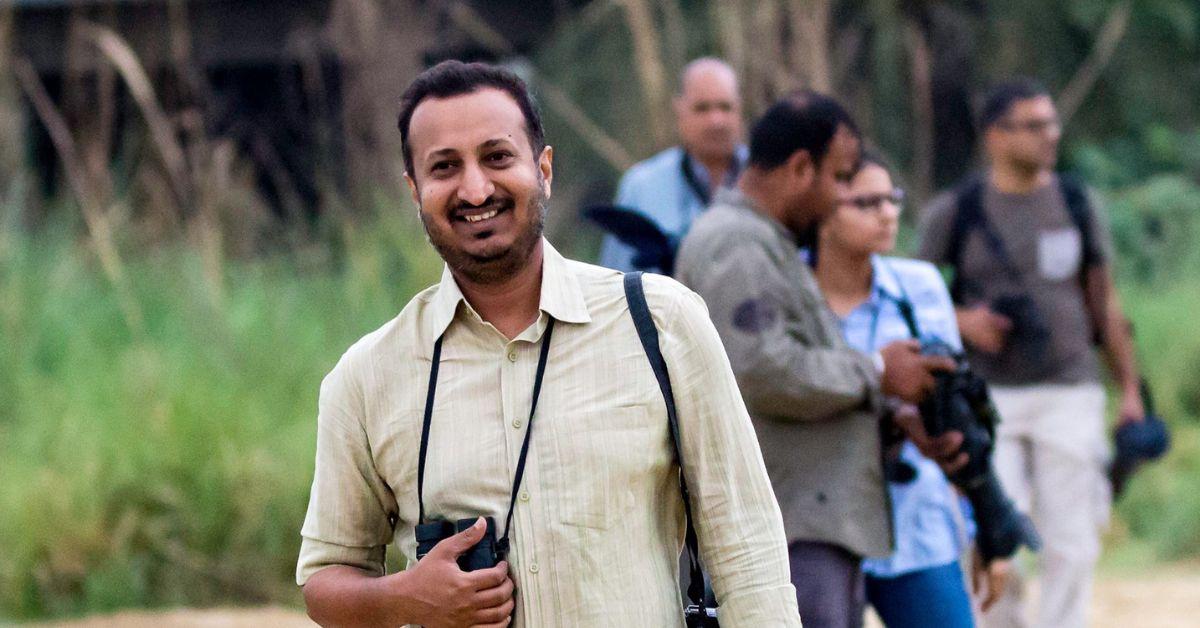Meet an Educator is a monthly series by Early Bird, where we feature the work of educators across India who are actively spreading the joy of birds and nature. This month’s featured educator is Peeyush Sekhsaria, an architect by training from Delhi, who now works in the nature education space.
Do tell us about yourself, where you are from, and your work.
By training, I am an Architect with a Masters in Mud Architecture, and I hold an M. Phil in Geography. I am from Pune, where I pursued my studies up to graduation. I have worked in the field of Disaster Risk Management for several years, starting after the Tsunami. Simultaneously, I have maintained involvement in various nature-related themes. Currently, I reside in Delhi, though I consider myself quite footloose. After holding a full-time job for six years, I am now consulting and hoping to do more work in the nature/ecology space.
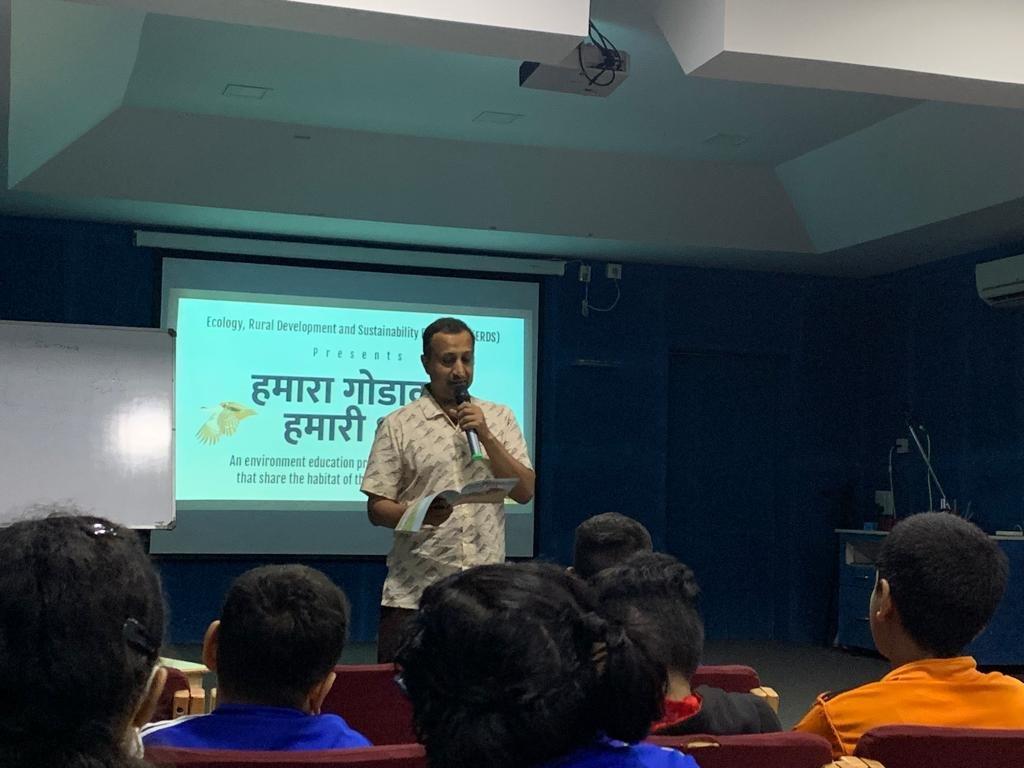
Photo credits: Vaishali Kulkarni/Storystation
Are you a birder? What about bird watching excites you?
I am an amateur birder. When I was in 4th or 5th standard, a neighbour’s cousin, who was a member of the IIT Powai Nature Club, came to visit. He took my brother and me bird watching, and it was my first time handling binoculars. With Salim Ali’s field guide, we created a bird list. I was instantly hooked. A US-based first cousin, kindly brought me a pair of binoculars, and my father also encouraged the hobby. It is difficult to articulate what excites me about birding. I guess it’s the joy of being out in nature, observing the beauty, flight, behaviour, habitat, calls, and colours of birds.
I must confess that I have a particular fondness for Owls, and I also admire the Black-winged Kite. Birds of prey also fascinate me, although I am not very good at identifying them. Woodpeckers hold a special place in my heart as well, the list of birds I adore is quite extensive. Looking back, I remember being a quiet and sometimes awkward child. Birds filled my lonely moments and gave me purpose. In that sense, I will be forever indebted to them.
When and how did you get interested in bird/nature education?
In some sense from the very beginning. We, as a group of neighbourhood friends, set up a nature club. We would go out on trails and make observations together. Later on, I began to feel the urge to create similar opportunities for others, just like the ones that initially got me interested in birding and nature.
I’ve always been interested in writing, and I have taken it up more seriously in recent years. I publish in English and our regional languages, especially Hindi and Marathi. I write in English, and some editors or friends translate. I also look at both indoor and outdoor nature activities more closely in terms of how they can be more effective, fun and impactful. I’ve tried to use my skills as a designer and communicator to develop tools, activities and games. More importantly, I have tried to identify various resources that are already available.
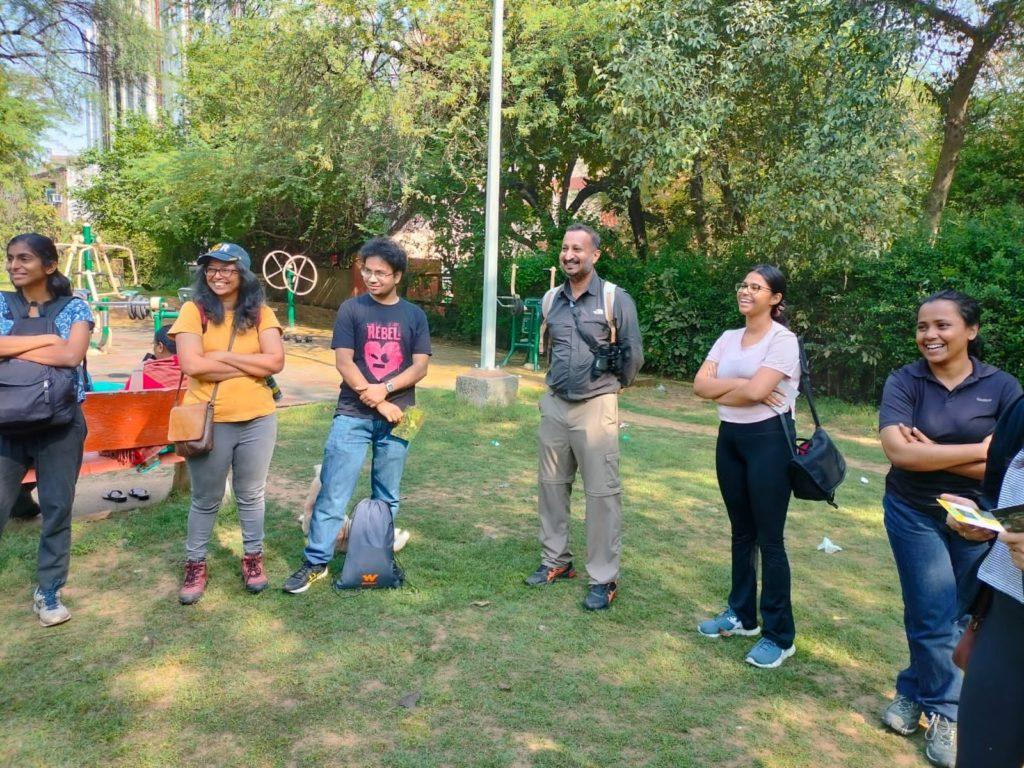
WWF India as part of their ongoing engagement
Photo Credits: Shonali Chenzira, WWF/India
What do you hope to achieve through your education work?
I hope to create a love for nature. My particular focus is on creating opportunities for the less privileged to learn about nature. Nature surrounds us everywhere; it is not just confined to prestigious national parks and tiger reserves. I hope I can help mobilise more individuals who will take action for nature in whatever capacity feasible for them.
I believe that many people today are interested in learning about birds, but they often lack a suitable starting point. Usually, they end up joining birders’ groups through their networks, like WhatsApp groups, which can be fast-paced and focused on high-level bird identification. This overwhelming environment can discourage beginners, and there is a lack of spaces specifically designed for newcomers.
That’s the type of space I’m genuinely interested in creating—a beginner-specific environment that helps individuals embark on their birdwatching journey. Instead of solely focusing on identification, my approach is to introduce them to observation-based methods, allowing them to watch birds and appreciate their behaviour.
Why do you believe it is important for children to learn about birds or connect with nature?
I always come back to the idea that there was someone who acted as a mentor and catalyst for someone like me. Additionally, there were other supportive factors that allowed my interests to grow and mature. I believe that people, especially children, have an inherent curiosity about the world around them, including nature. However, they often lack the opportunities to truly connect with it.
Children are remarkably receptive, and sparking their interest early in life can have significant benefits. It’s essential that we pass on these passions to younger generations; otherwise, we miss out on a crucial role that we should be playing in shaping their connection with nature.
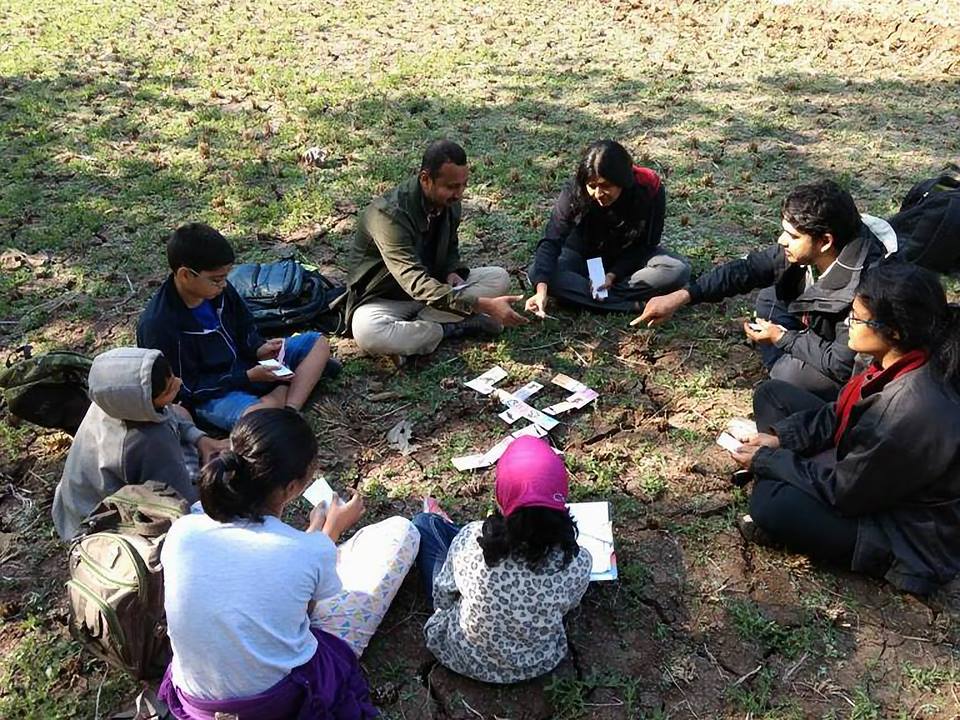
Photo Credits: Anikat Anant Motale
What tools or resources have helped you in teaching about birds? Can you describe an approach that has worked exceptionally well for you?
I employ a games and activity-based approach in my birding sessions. I use flashcards from Early Bird, cut into two parts with which I conduct an introduction game, “Find Your Partner.” I select the birds we are likely to see on the trail and distribute the half cards among the participants. The activity is to search for their partner, briefly introduce each other and also share a bit about the bird they have on their card. The excitement when they find the bird during the trail enhances the birdwatching experience.
Additionally, I encourage participants to name the birds themselves instead of providing names like “Red-vented Bulbul.” I prompt them to think about the size, colour, behaviour, and diet. This exercise helps them develop their birdwatching techniques and references. I have also found that associating certain stories, such as the call ‘Did-he-do-it?’ with tongue-twisting names like “Red-wattled Lapwing” makes it easier for people to retain information and adds a fun aspect to their birdwatching.
I encourage participants to pay attention to the bird’s activities and movements, such as nesting, feeding, displaying, calls, whether it is flying rapidly or in a calm manner – these behaviours are often more captivating than simply seeing a bird. We also imitate the calls of birds we encountered, even if we haven’t heard the actual calls during the trail. For example, mimicking the Laughing Dove‘s call is great fun. These tools have proven to be effective in engaging and entertaining participants during the birdwatching sessions.
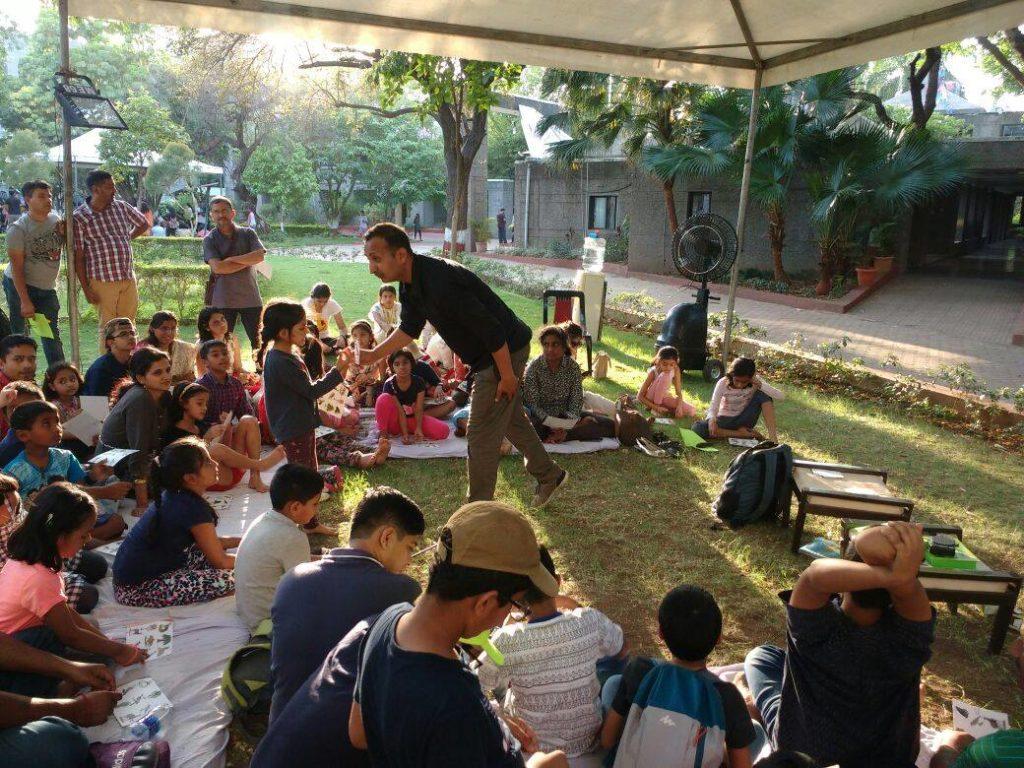
Photo Credits: Vaishali Sekar Kulkarni/Story Station
Have you encountered a significant challenge as a bird/nature educator, how did you overcome it?
One of the challenges with birding is that without tools like binoculars, it becomes difficult for people to see birds while out in nature. To address this, I’ve tried to acquire decent quality but affordable binoculars. Typically, I carry around 5-6 binoculars with me when leading birding trails for people, and I’ve noticed that it makes a significant difference in their experience.
Outdoor trails come with their own set of challenges, such as distance, accessibility, and the need for sufficient resources. Additionally, when working with school children, there may be the added challenge of scheduling the activity around their school hours. To address these obstacles, I have also focused on developing indoor or immediate vicinity activities. For instance, some of the activities I mentioned earlier, like using flashcards or playing the “Find Your Partner” game, can be easily adapted for implementation within the school premises.
Furthermore, I encourage participants to explore the green spaces available around them, whether it’s within the school compound or the nearest public garden. Even in busy urban areas like Delhi, where I live, there are often public gardens within walking distance. The idea is to emphasize that we don’t necessarily need to travel to far-off destinations like Bharatpur, Kanha, or Corbett to connect with nature. There is an abundance of wildlife and natural beauty right around us.
Do share any memorable moment or experience you have had in teaching kids about birds/nature. Can you recall any insightful instance that shaped your perspective?
While I can’t pinpoint a specific incident, the overall feeling I usually get after conducting birdwatching sessions is that people have had a great and enjoyable experience. They not only have fun but also gain valuable knowledge about their surroundings and the nature present in their vicinity. It’s not just about birds; we also observe vegetation, other forms of life like butterflies, bees, insects. This broader perspective serves as an eye-opener for many participants, as they realise the diverse life that exists around them, which they may have previously overlooked.
During these trails, we take our time, covering relatively short distances, allowing ample opportunity to closely observe and discuss the things we encounter. We want everyone to have a chance to see and appreciate. When we later compile a list of the birds we’ve spotted, participants are often pleasantly surprised to discover that they observed a significant number, far more than what they thought were around. This evokes a sense of wonder and excitement, as they hadn’t realized the richness of biodiversity present in their surroundings.
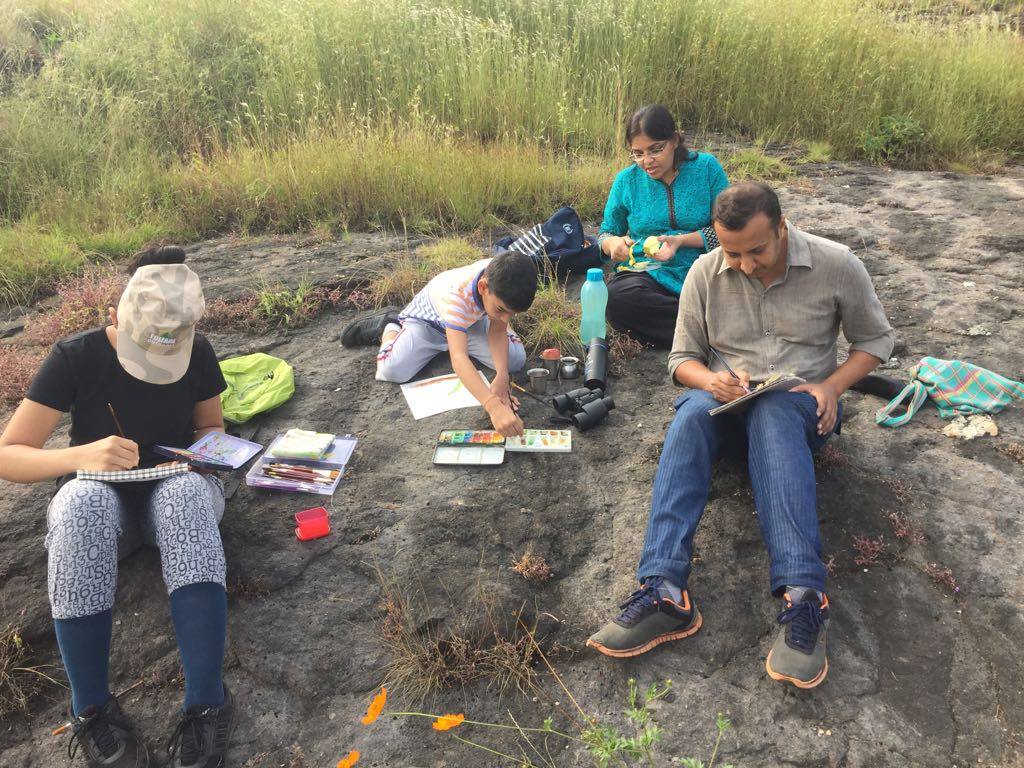
Photo: Ravi Mundada
Have you noticed any changes in your learners after they received exposure to birds and nature-based learning? If yes, what are they? If not, why do you think that is?
We discuss what we have observed during the birdwatching sessions, I ask them to share interesting observations or behaviour they noticed. I have noticed that children, especially those from rural areas, can be quite reserved compared to their urban counterparts. Urban kids may display more confidence or familiarity with these types of sessions, whereas rural children might be quieter and require a more gentle approach to encourage their participation. However, over time, as they become more comfortable with the activities and environment, I have witnessed remarkable progress in their abilities.
With consistent exposure to birdwatching and nature, I have seen children develop impressive skills, such as maintaining bird lists, creating bird paintings, and identifying bird calls. These achievements often arise from their regular excursions and exposure to nature. While it might not happen in a single session, the children gradually gain a deeper appreciation for the fascinating world of birds and wildlife. Overall, the impact of the birdwatching sessions on individual children might not be immediately apparent, but over time, there is a growing sense of interest and awareness of the wonders of nature, along with the retention of knowledge shared during our discussions.
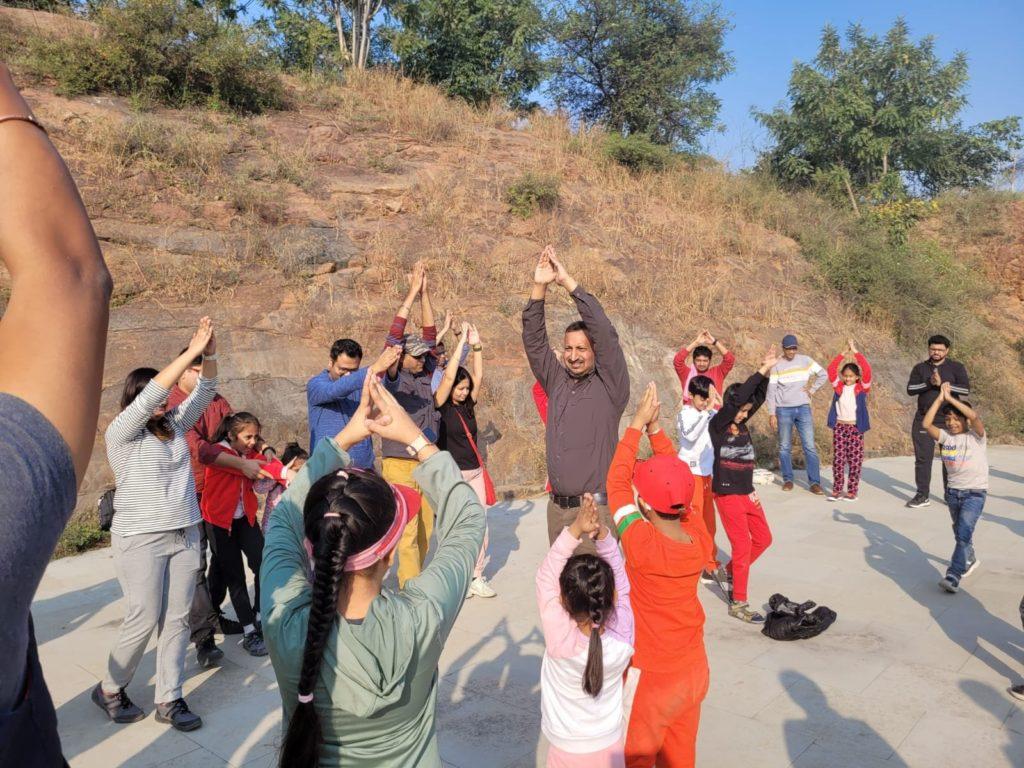
Photo: Rama Lakshmi Dhavala
What message would you have for your fellow educators, or somebody starting out in their nature education journey?
Nature educators can be broadly categorised into two groups. Individuals who have a passion for nature, including scientists, researchers, they are adept at species identification. The second group consists of trained educators/teachers interested in nature, they excel in employing effective teaching method, however, might feel inadequate in their nature knowledge.
I fall in the first category. We should move away from a focus on identification. I feel honing our pedagogical skills can lead to a more inclusive and engaging learning experience for all. For educators who feel less confident about their knowledge of nature, I think that depth is more crucial than breadth. Educators possess valuable teaching skills, and that strength can compensate for any perceived gaps in their identification abilities.
Both groups have much to learn from each other. By exchanging knowledge and methods we can enrich the impact of our work. It’s essential to work with the resources available and continue to improve as educators, ultimately promoting a greater understanding and love for nature among their audiences.

